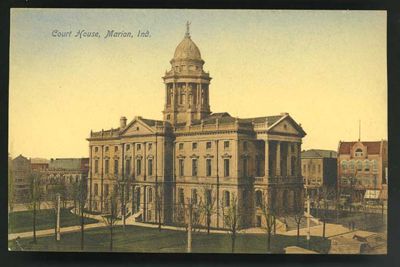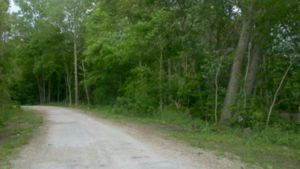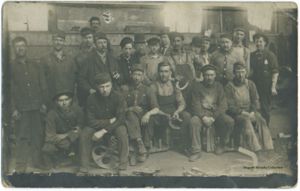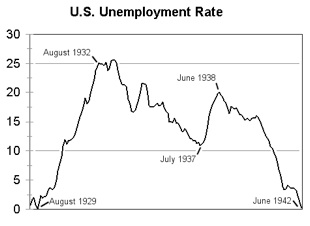Marion In the 1920s
Contents
Marion, the Queen City
Marion, Indiana in the 1920s was a small community, a working class town nestled in the farmland of Grant County. Industry began to shape the landscape of the once Native American dominated territory. Factories of every type, for example, shoe, glass, and foundries to name a few began to spring up drawing newcomers from southern Indiana, Kentucky, and the all black community of Weaver to Marion for work. Marion appeared to be a perfect small town and presented a “picture of comfort, prosperity, and progress” (Madison, 2001, p.32). In the midst of this industrial revolution in the heartland, community niches remained tight and exclusive and your reputation was everything. Ask the residents of this small community about life in the 1920’s and one will hear different viewpoints based on the societal factor of race.
Roaring Twenties
The 1920’s, commonly referred to as the “Roaring Twenties”, was a period of cultural liberation with rapidly changing lifestyles, prosperity, and technological advancements. The visual image of flappers in short frilly dresses in a smoke filled jazz room conjures up images of a more progressive society. Gambling, speakeasies, and bootlegged liquor were ever present throughout the city. During prohibition for fourteen years, the manufacturing, sale, and transport of alcohol was illegal. The 18th Amendent went into effective January 1920, but the sheriff did little to nothing to enforce prohibition (Madison, 2001). In December of 1933 the 21st Amendent to the United Sates Constitution made alcohol legal again. Across the landscape of the county one could find home stills and secret saloons, as well as establishments of ill repute. However, the city touted a more wholesome picture.
Marion's Black Population
In the 1920’s, Marion black population was approximately 5 percent of the total population in the town (Madison, 2001). While the town had a black doctor, shops and a grocery store owned by those of color, the color line within the city was drawn. White citizens lived in North Marion. The town’s swimming pool at the park was off limits to the black residents. By most accounts the city of Marion was segregated if not by literal interpretation certainly by social expectation. While technological progress seemed inevitable, social equality and progress were at a standstill.The Klan
In the book "Women of the Klan", the author (Blee) described Indiana as one of the most “racially, culturally, and religiously homogeneous states” (p.7, 1991). The Klan although hidden beneath a sheet to the outside community was ever present in the community. Most white people personally knew of or had a family member involved with the Klu Klux Klan, including elected officials such as the sheriff. While slavery had been abolished for years, nonetheless black people were still treated as disposable. When wrongdoings such as robberies and shootings occurred the black man was customarily accused and railroaded into a convection or a crime he may not have committed based solely on the color of his skin. As Carr (2006) so poetically described in her book, “Racism will always manifest in violent ways to preserve itself” (p. 153).
The Culture of the Time
The advent of Ford’s Model T cars made owning a car more affordable. Cars brought an easy of mobility to travel. Many Americans selected the cost efficient, free will choice of travelling by automobile (Scott, 2011). Young couples in Marion looking to get away from their families began flocking to a remote area commonly referred to as “Lovers Lane.” Lover hot spots such as this were typically remote areas that cars could easily get into and out of quickly. Unfortunately, love was not always in the minds of those venturing to “Lovers Lane”. Occasionally, petty thieves would prey on the lovestruck, naive visitors. Marion elected a new mayor in 1929. Mayor Edwards seem to overlook the fifteen to twenty "blind tigers" and "blind pigs". Which were establishments that illegally sold alcohol as well as speakeasies and roadhouses in Marion (Madison, 2001). In Madison’s book, Edwards confessed he frequented some of these establishments. Immortality seemed pervasive throughout the county while law enforcement appeared unconcerned with stopping prostitution, gambling, or prohibition laws. The high life of the 1920s abruptly came to a halt in 1929 when the stock market crashed. Black Tuesday, as it is known, was a worldwide downturn in the economy.The banking system failed and unemployment was widespread.Unemployment
Unemployment went from virtually zero in August in 1929 to 25% by August of 1932 as noted in the graph below.(http://int.danville.k12.pa.us/teacherweb/aberkey/US_History/Effects_of_the_Great_Depression.html).
Able bodied workers went from factory to factory looking for work but no work was to be found. Wages were lowered and many citizens lost their farms and homes. Families did not have enough food to feed everyone in the family. Food lines became a way of life. Soup kitchens were at maximum capacity during meal time. Many men became peddlers, selling trinkets and working for food. Shantytowns were made of scavenged materials and popped up throughout the country (Kennedy, Cohen, & Bailey, 2008). People were affected financially and psychologically as joblessness caused helplessness and self-doubt (Weiser, 2003). The Great Depression brought progress to a halt. Marion was being redefined. However, while many citizens struggled to survive, a glimmer of hope shined through in those bleak days. A sense of community developed within the neighborhoods and churches.
KKK
In the history of Marion there has been a record of several groups with possible involvement with the infamous lynchings. The Ku Klux Klan was a suspected group for influence. The Horsethief Detectives were another group that may have had a hand in the Lynchings.
The Klan is one of the most notorious groups known in the United States, especially since they were against Catholics, Jews, Native Americans, and African Americans. Their main weapons were fear, numbers, and political powers. Sheriff Campbell had been rumored to have been a member of the Klan during the '20s. This could explain his allowing the mob to enter and take the prisoners to their deaths. But does this mean the KKK had committed the lynching? No, at least not physically, for the majority of the oraganization had collasped in the late '20s and they were a small group. Yet their proclamations from their days of power could have influenced the crowd that night (Madison 2001).The Horsethief Detectives
Several other groups had association with the KKK. One of them was known as the Junior Order of American Mechanics which was one of the public masks of the KKK (Betty Reynolds, personal communication). A second group known as the Horsethief Detective Association may have been in league with the KKK. Since the police and sheriffs did not have the permission to do their job beyond the borders of their county these "detectives" were banded together as a group with the power to do just this. They would track down horse thieves since those creatures were the best means of transportation that most people could afford. They had been seen at many of their picnics, and they were used as a tool to enforce the wishes of the Klan (Betty Reynolds, personal communication).
A Community Defined
Marion, Indiana in the 1920’s was a small community burrowed in the northern part of Indiana. The true identity of the people, places, and activities would be dormant until the lynching in 1930. A community whoes destiny was yet to be determined but would forever be defined. A community without boundaries, but a community with color lines. A community with an early black settlement called Weaver but with a secret inner circle controlled by the Klu Klux Klan. The Great Depression presented financial hardships for many in this small community. Many retreated to the self-medicating properties of bootlegged liquor as others strived for a better life with gainful employment in a factory. A simple time, a simple way of life-nonetheless a multifaceted community with a rich history and a diverse background.
Credits
This paper was written by Allison Richardson for Mr. Munn's IU ACP history class at Marion High School during May 2011. The sections on the KKK and the Horsethief Detectives were written by Christofer Morton.
References
- Blee, K. M. (1991). Women of the Klan: Racism and Gender in 1920s. Berkeley: University of California Press.
- Carr, C. (2006).Our Town: A Heartland Lynching, a Haunted Town, and the Hidden History of White America. New York: Three Rivers Press.
- Kennedy, D. M., Cohen, L., & Bailey, T. (2008). American Pageant (14th ed.). Boston: Wadsworth Cengage Learning.
- Madison, J. H. (2001). A Lynching in the Heartland: Race and Memory in America. New York: Palgrave MacMillan.
- Scott, R. (2011). The Roaring Twenties: A Historical Snapshot of Life in the 1920’s. Retrieved from http://www.1920-30.com.
- Smith, C. (Writer) & Smith, C. (Director). (2011). The Gospel According to James.(Play). Indianapolis: Indiana Repertory Theatre.
- Weiser, K (2003). Legends of America.Retrieved from http://www.LegendsofAmerica.com.





